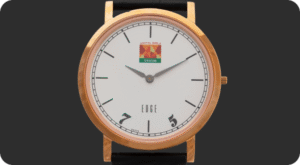Asian Statuary and Its Impact on Interior Design Trends
In the evolving world of interior design, cultural elements continue to inspire and shape unique aesthetics. Among these influences, Asian...
In the evolving world of interior design, cultural elements continue to inspire and shape unique aesthetics. Among these influences, Asian statuary has emerged as a captivating trend, blending traditional craftsmanship with contemporary décor styles.
From serene Buddha sculptures to intricate mythical creatures, Asian statuary brings a sense of history, spirituality, and artistry that transforms living spaces. This article explores how Asian statuary is impacting interior design trends, adding depth, balance, and cultural richness to modern homes and commercial spaces alike.
The Timeless Appeal of Asian Statuary
Asian statuary encompasses a wide range of sculptures and figurines originating from diverse cultures across the continent, including Chinese, Japanese, Indian, Thai, and Balinese traditions. These pieces often carry profound symbolism representing concepts like peace, prosperity, protection, and enlightenment.
What makes Asian statuary so compelling for interior design is its timeless appeal. Crafted from materials such as jade, bronze, wood, and stone, these statues bring tactile texture and a natural warmth to interiors. Their intricate details and spiritual significance create a focal point that invites contemplation and admiration.
For example, the graceful lines of Japanese Kannon statues evoke compassion and tranquility, while the robust and fierce Chinese guardian lions, or “Foo Dogs,” symbolize protection and strength. Incorporating these pieces provides not only aesthetic beauty but also layers of meaning that enrich a space’s atmosphere.
How Asian Statuary Shapes Modern Interior Design
1. Bringing Tranquility and Balance
One of the most popular uses of Asian statuary in interiors is to foster a calm and balanced atmosphere. For example, Buddha statues symbolize peace and mindfulness, making them ideal additions to meditation rooms, living areas, or spas.
Designers often incorporate these statues within minimalist or Zen-inspired spaces, where their serene presence complements clean lines and natural materials. The result is an environment that encourages relaxation and mental clarity a much-needed refuge from today’s hectic lifestyles.
Incorporating Asian statuary in gardens or outdoor spaces also taps into the principles of Feng Shui, where the placement of statues can enhance harmony and positive energy flow.
2. Adding Cultural Depth and Storytelling
Asian statuary introduces storytelling into interior design. Each piece carries history and meaning, whether it’s a Chinese guardian lion meant to protect the home or a Hindu deity representing wisdom and prosperity.
Incorporating these statues allows homeowners and designers to express appreciation for Asian cultures and traditions, enriching the narrative of a space. This cultural depth resonates especially well in eclectic and global-inspired interiors where diverse influences coexist harmoniously.
For example, a Balinese statue of Ganesha might symbolize wisdom and success, becoming a centerpiece in an office or creative studio to inspire productivity and positivity.
3. Creating Dynamic Visual Contrast
In contemporary design, Asian statuary is often used to create striking visual contrasts. Placed against modern furniture, sleek metal accents, or monochromatic color schemes, the organic forms and intricate craftsmanship of these statues stand out as statement pieces.
This interplay between old and new adds dimension and character, preventing interiors from feeling sterile or uniform. A well-chosen statue can serve as a conversation starter, drawing attention and sparking curiosity about its origins and symbolism.
For instance, a rustic wooden Buddha paired with ultra-modern acrylic furniture creates a compelling juxtaposition of tradition and innovation that appeals to many contemporary designers.
4. Enhancing Feng Shui and Positive Energy Flow
Many interior designers and homeowners value Asian statuary for its role in Feng Shui — the ancient Chinese practice of harmonizing energy flow within a space. Specific statues, such as the Laughing Buddha or Koi fish, are believed to attract good fortune, health, and prosperity.
Strategically placing these statues in certain areas of the home or office is thought to optimize energy circulation and balance yin and yang forces. Whether or not one fully subscribes to Feng Shui principles, these statues contribute an element of intention and mindfulness to design.
For example, positioning a Laughing Buddha near the entrance is said to invite positive energy and happiness into the home, promoting a warm and welcoming atmosphere.
Historical Context: Asian Statuary Through the Ages
Asian statuary reflects centuries of religious, cultural, and artistic traditions. From the ancient terracotta warriors of China to the exquisite bronzes of India’s Gupta period, these sculptures document the spiritual and societal values of their times.
Understanding the historical context adds another layer of appreciation for these pieces. For example, the serene smile of the Gandhara Buddha statues represents a fusion of Greek and Buddhist art, symbolizing peace and enlightenment across cultures.
This deep historical resonance means Asian statuary does more than decorate a space — it connects modern interiors with a rich tapestry of human heritage.
Tips for Incorporating Asian Statuary Into Your Space
- Consider scale and proportion: Larger statues can serve as dramatic centerpieces, while smaller figurines work well on shelves or tabletops.
- Choose materials that complement your décor: Stone, wood, or metal statues can align with rustic, modern, or traditional themes.
- Respect cultural significance: Educate yourself about the symbolism behind the statues to incorporate them thoughtfully and respectfully.
- Use lighting to highlight features: Soft, focused lighting can enhance the texture and details of the statues, creating inviting focal points.
- Balance with natural elements: Pair statues with plants, water features, or natural fabrics to create harmonious environments.
The Future Influence of Asian Statuary in Interior Design
As global connectivity increases and cross-cultural appreciation deepens, Asian statuary is poised to remain a powerful influence in interior design. Advances in sustainable materials and ethical sourcing also mean that future statuary pieces will likely reflect a greater emphasis on environmental responsibility.
Moreover, innovative artists and designers are blending traditional Asian motifs with contemporary forms, pushing boundaries to create fresh interpretations that resonate with modern sensibilities. This fusion ensures that Asian statuary will continue to inspire and captivate for years to come.
Conclusion
Asian statuary offers more than just decorative appeal; it brings tranquility, cultural richness, and dynamic visual interest to interior spaces. Whether used to foster mindfulness, celebrate heritage, or enhance aesthetic contrasts, these sculptures have become integral to modern design trends.
For anyone seeking to elevate their interiors with meaningful artistry and timeless elegance, incorporating Asian statuary provides a path to deeper connection, balance, and inspiration. Embrace this tradition and let your space tell a story that spans centuries and continents.




